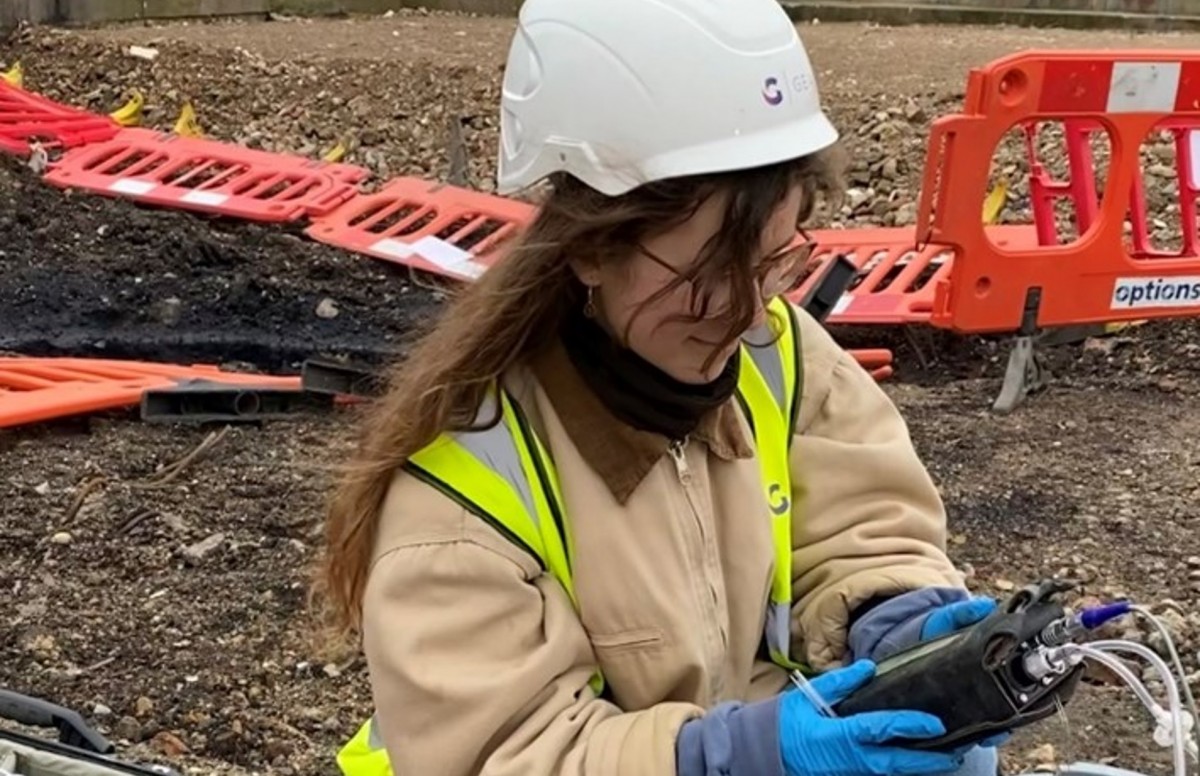All About Geotheta
All About Geotheta
Blog Article
The Basic Principles Of Geotheta
Table of ContentsThe 20-Second Trick For GeothetaSome Known Facts About Geotheta.Everything about GeothetaGeotheta - An Overview
They team up with civil designers, architectural engineers, architects, and various other professionals to integrate geotechnical factors to consider into the overall project style and construction process. This requires reliable synergy, sychronisation, and communication to guarantee that the geotechnical elements straighten with the project goals and fulfill regulative requirements.Mining & Materials Design: Principles of boring, infiltration rates, and elements influencing the option of exploration technique. Blasting techniques in surface area and underground functions. Mechanical and continuous techniques to fragmentation, including longwall shearing and fullface boring.
Integrated analysis of fragmentation and comminution procedures. Offered by: Mining & Materials Design.
Top Guidelines Of Geotheta
Bachelor's level programs in civil, geotechnical, geological, and ecological engineering generally last four years and consist of general education and learning courses in English, social science, and the liberal arts, in addition to courses in sophisticated maths, architectural geology, and fluid mineralogy. (https://sketchfab.com/geotheta)
Geotechnical design includes the analysis of the dirt and rock conditions at a certain website, and their implications for the development of that site. As a lot of frameworks rely upon the ground for assistance, it is without surprise that a detailed understanding of the ground conditions, and the suitability of structure systems, are important to the long-term stability and performance of the building or framework.
Being experts in the examination of geological formations and ground practices, geotechnical engineers perform scientific investigations and screening to comprehend the impact these geological developments may have on the style and building and construction of building, civil and facilities jobs. This knowledge is critical for the layout and construction of structures, roadways, passages, dams, bridges, and water system and sewer system.
The geotechnical team at Douglas Partners routinely seek advice from with architects, layout engineers, programmers, and home builders to make recommendations on layout and development propositions to make sure that the developed structures are appropriately designed for the ground problems. For instance, the layout of footing systems requires to think about the weight of the framework, the capability of the ground to support that weight along with movement resistances and efficient building and construction.
Geotheta Fundamentals Explained
This task is significantly simplified by the use our Douglas Map geospatial platform that makes this details easily accessible in a very easy to use internet internet browser interface. A geotechnical designer will certainly direct the drilling of boreholes and test pits to collect dirt and other samples, and likewise examine surface features and ground exposures to create a geotechnical version of the subsurface conditions.
Relying on the project type and ground conditions ran into, research laboratory testing may amongst various other things analyze strength, compressibility, sensitivity and/or leaks in the structure of soil and rock samples. Hereafter information is collected and looked at, the outcomes are utilized for a geotechnical version of the site, which is generally offered as sections throughout the site.

A geotechnical examination naturally can just analyze the ground problems at the areas drilled or excavated. Natural variants in dirt and rock conditions can take place across a site and between examination areas. It is consequently good technique that the geotechnical designer be kept throughout building of the job to supply on-site verification that the ground problems encountered are constant with the expectations and advice provided in the geotechnical investigation record.
Geotheta Things To Know Before You Get This
Geotechnical designers utilize their thorough expertise of soil and rock to assess risk and solve problems on diverse infrastructure projectsGeotechnical engineering is a specialist branch of civil engineering which considers the behavior of planet materials and the application of dirt and rock technicians. Engineer of Record. As a geotechnical engineer, you will assess the physical, mechanical and chemical homes of soil and rock in order to design structures, preserving structures and earthworks
Geotechnical design is closely connected to and overlaps with, both design geology and ground engineering - https://www.4shared.com/u/w_sNL5Rc/ianhammond2191.html. It's possible to specialise in geotechnics or help a geotechnical business however be known as an engineering rock hound or a ground engineer. As a geotechnical engineer, you'll require to: construct and maintain relationships with clients and various other specialists associated with the site, throughout each projectmaintain safety criteria on website bear in mind cost ramifications when you make recommendationsstudy geological maps and aerial photographs from a series of sources and from different time periodsexamine building prepares to see just how feasible they are based upon your understanding of the siteinvestigate threats or geological threats for the sitesearch for ecologically sensitive functions, such as land fill beginning to develop Source accurate and interpretive ground modelsplan field investigationsdrill and evaluate samples of bedrock, dirt, groundwater and added materials monitor various other specialists on sitesolve technical issues as they develop, such as unanticipated frameworks at drill sitesmonitor problems during and after building and construction to make certain frameworks are secure in the brief and lengthy termadding data accumulated on website to your first researchcreating geotechnical calculations, illustrations, and 2 or three-dimensional computer system versions analyzing the datamaking recommendations concerning the proposed use the website

Report this page